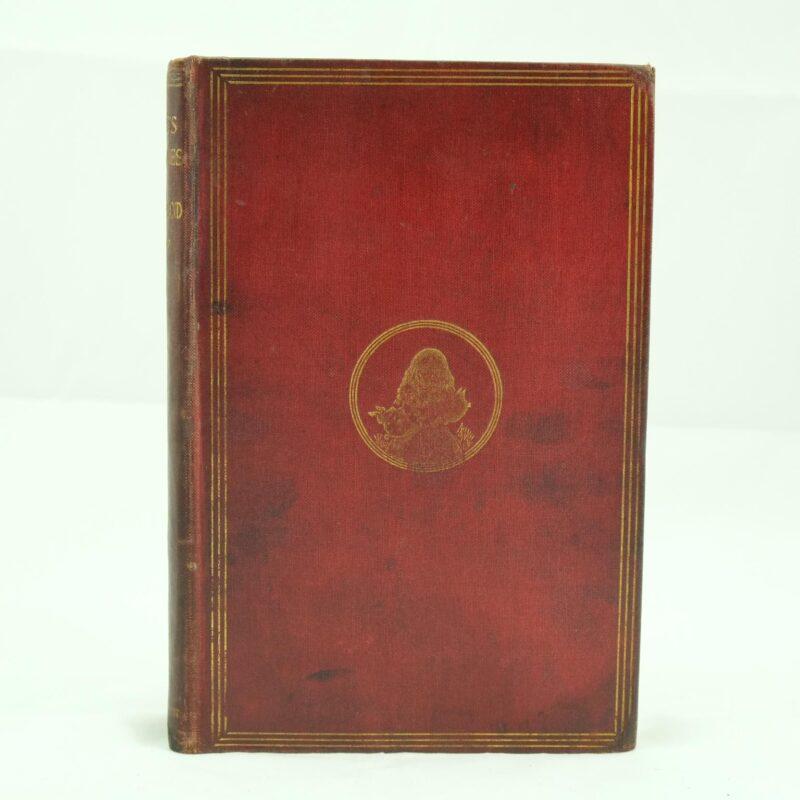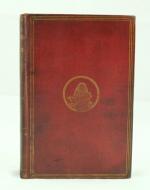Created by Meyer Little on Mon, 10/14/2024 - 22:10
Description:
In the wonderful world of children’s literature, Lewis Carroll’s classic Alice’s Adventures in Wonderlands is a pivotal work of art that monumentally changed the course of the genre. The publication of Carroll’s tale in 1865 marks a notable shift away from didactic Victorian-era moralistic instruction with a focus on discipline and education to adventures of nonsensical fun, innocence, playfulness, child-centered journeys, and fantastic characters. Unlike children’s literature before Alice’s Adventures in Wonderland, Carroll’s book encourages self-discovery and identity, critical thinking and logic, and challenging societal norms. The story and the illustrations paved the way for publications to come.
While Lewis Carroll wrote the forward-thinking adventurous tale, John Tenniel’s illustrations also had a tremendous impact on young readers throughout time. The drawings complement the whimsical adventures and spark imagination. The visuals engage the reader and move the tale along. The variety of illustrations over the decades have brought the story to life and offered readers of all ages iconic images of Alice and the well-developed characters. Alice’s Adventures in Wonderland is a well-written and beautifully illustrated story that undoubtedly changed the future of children’s literature. Throughout adaptations, revisions, and different forms of media, Alice maintains her sense of curiosity and wonder throughout her depictions. Carroll's original illustrations and view of his story set the groundwork for how Alice and her wonderland should look. While different illustrators have absolutely implemented their own style and ideas, they all still keep the feeling of the Carroll's ideas on curiosity, exploration, and wonder.
Carroll, Lewis, Alice's Adventures in Wonderland (1865), first edition published by Macmillan, illustrated by John Tenniel, Wikipedia. The story begins with young, bored, and curious Alice as she follows a white rabbit down a rabbit hole and tumbles into a strange and fantastical world filled with bizarre creatures and nonsensical rules. As Alice traverses through this unconventional and whimsical world, she encounters eccentric characters. Some of the most notable characters are the Mad Hatter, the Cheshire Cat, the Queen of Hearts, and the Caterpillar. Each encounter Alice experiences challenges her sense of identity and knowledge of the world. With conversations of history, schooling, time, and punishments, Alice's encounters seem to echo the peculiarities of adulthood. Alice experiences metamorphosis, as her body is constantly changing and experiences instances of peril throughout her morphing. Notably, the Queen of Hearts's erratic rule of law—“Off with their heads!”—exemplifies the nonsensical rules and chaotic authority Alice encounters throughout her adventure. Through all she endures, Alice maintains her curiosity and resilience, but her journey ends abruptly when she awakens, revealing it was all a dream. Carroll's story resists offering a clear moral message, instead reveling in imagination, word play, and absurdity. Contrasting to the moral view of the time, Carroll underscores the fleeting nature of childhood and the importance of maintaining one’s sense of wonder even into adulthood. The original cover design illicits imiganation right away. The sleek red design with the beautiful shiloutte of Alice give the book a more sophisticated feeling echoing Carroll and Tenniel's depictions of Alice, seemingly proper and Victorian on the outside, but full of wonder and curiosity on the inside.
“Lewis Carroll” photograph by himself, 1856, Wikipedia. Charles Lutwidge Dodgson (1832-1898), better known by his pen name Lewis Carroll, was an Aanglican deacon, photographer, mathematician, and author best known for his groundbreaking tale, Alice’s Adventures in Wonderland (1865). Born in Daresbury, Cheshire, England, Carroll grew up in a devoutly religious household, the eldest son of 11 children. This upbringing set the stage for him to have a facility for storytelling and entertaining young readers. In this self-portrait, Carroll is seen reading a book, an authentic display of his academic prowess. Carroll’s formal education included studying mathematics at Christ's Church, Oxford. He excelled and later became a mathematical lecturer. Carroll also discovered his love for photography around this time and began taking portraits of the Liddell family, whose father, Henry, was the dean of Christ's Church. Alice Liddell served as the inspiration for his titular character Alice in Alice's Adventures in Wonderland, although some modern day scholars are skeptical as to the nature of their relationship. Lewis wrote multiple mathematics books, some of his work still being relevant in the field in modern day, but was more known for his photgrophy. Carroll's interest in photogrophy, as well as his skill with the subject, show that he knew the power and importance of pictures. Carroll's photos, as well as his his illustrations, highlight his whimsical eye and exemplify his contiuned use and importance of using the eyes to learn and develop. Lewis Carroll implemented his passion of entertainment and childlike wonder into his writing as is evident in the Alice series. By embracing fantasy and mastering the use of nonsensical language, Carroll was pivotal in children’s literature progressing from didactic teachings of the Victorian era to captivating tales of entertaining characters and far away places. Carroll’s work has never gone out of print and continues to impact generations to this day.
Lewis Carroll, Alice’s Adventures Underground (1862–64), Page 33 Show.Me.Uk. Before Lewis Carroll and illustrator John Tenniel crafted the masterpiece that is Alice's Adventures in Wonderland, Carroll himself had written and illustrated Alice's Adventures Underground. While on an outing with Alice Liddel and her sisters, Carroll created stories to keep them entertained. The story of young Alice’s journey down a mysterious rabbit hole into a world of wonder captivated the two young sisters, leading them to beg Carroll to write it down, prompting the creation of Alice's Adventures Underground.
While slightly more jarring than the classic Tenniel drawings yet to come, Carrolls illustrations realize his sense of wonder and curiosity. The scene shown here exemplifies Alice’s enduring message about learning through wonder, a theme that resonates across adaptations and translations. Alice and the White Rabbit are depicted conversing in the illustration with Carrolls handwritten text surrounding it, a stylistic choice that will be built upon and made even more engaging as Carrolls vision is more fully realized. Alice is described as looking “curiously” about, perhaps the most crucial aspect of her character which has always been a part of Carroll’s story. Carroll's image highlights the impoertance of illustrations within the story,. Even though Carroll himself was not known for his illustrative prowess, he knew the importance of seeing the scenes actually depicted as opposed to just reading them. Caroll's illustrations maintain the feeling of wonder and curiosity reflecte in his extrodinary wrtiting voice. Lewis Carrolls illustrations explemlify the power of picture, and brought the story to life even in this early version of the story. This image, and Alice's Adventures Underground as a whole serves to remind readers that Alice's legacy and message of curiosity, wonder, exploration, and adventure has been set in stone from the very beginning.
John Tenniel, "Mouse Tells a Story to the Birds and Alice," Alice's Adventures in Wonderland, by Lewis Carroll, 1865. Medium.com. John Tenniel was commissioned by Carroll to do the illustrations for Alice's Adventures in Wonderland and has since become a central piece in the definitive way to read the story. Tenniel’s masterful illustrations perfectly coincide with Carroll’s writing. The line work, depiction of Carroll’s whimsical and mystical characters, as well as his drawings of Alice herself mesh together to form what makes Alice’s Adventures in Wonderland so engaging. In this photo, Alice is in a circle listening to Mouse tell his tale on why he dislikes dogs and cats. Tenniel’s design for the Mouse and the rest of the animals feels very surreal, as if they were straight out of a dream. His ability to capture the surreal and whimsical opens the door for the reader to imagine a world of their own, creating their own personal view of Wonderland, while still maintaining a definitive look. Notability, Alice is drawn with her legs out and her hands clasped together. This has relevance as sitting with one's hands clasped is reminiscent of the proper posture for reciting Victorian didactic teachings which Alice references throughout the story. Her posture and legs, however, show Alice slowly becoming her own autonomous person, mirroring the story’s plot itself. Tenniel’s drawings are the perfect complement to Carroll’s story of wonder and curiosity.
Copyright:
Associated Place(s)
Featured in Exhibit:
Artist:
- Lewis Carroll





